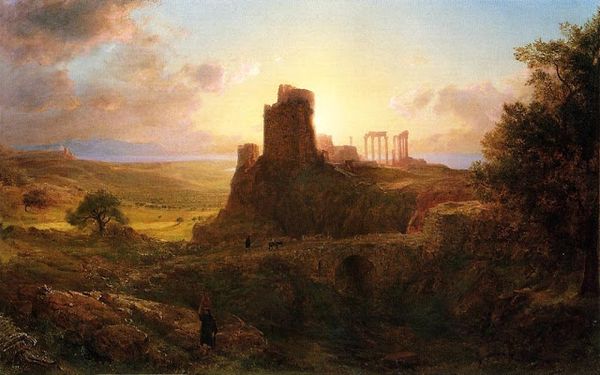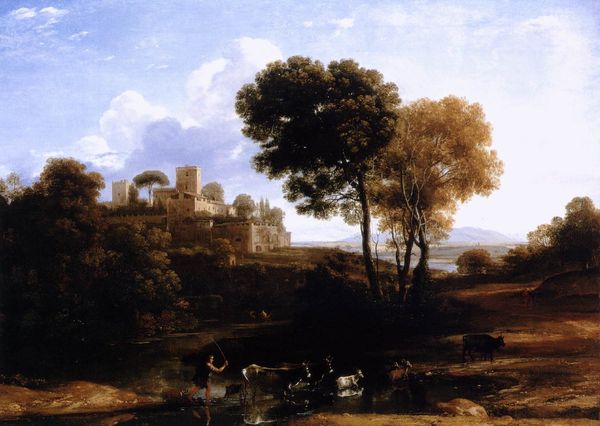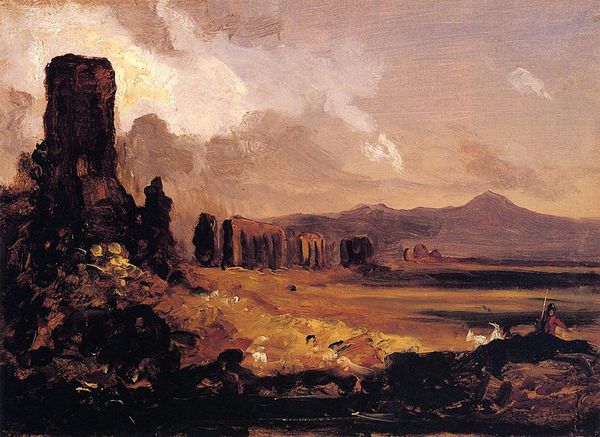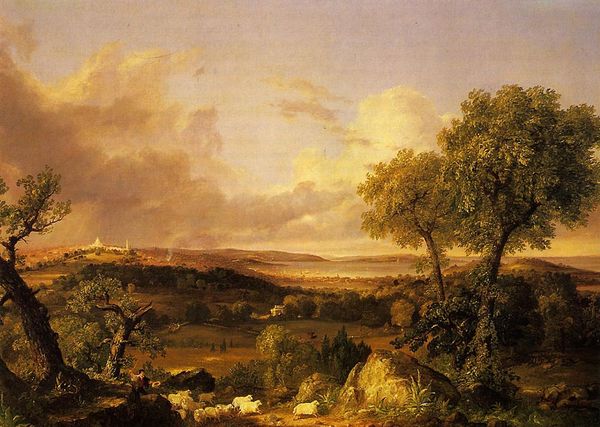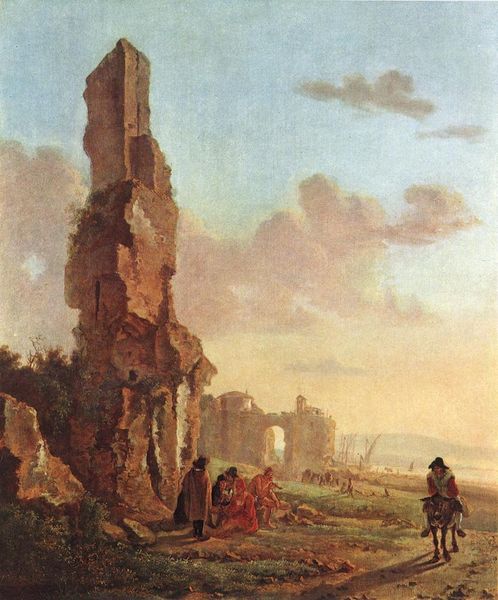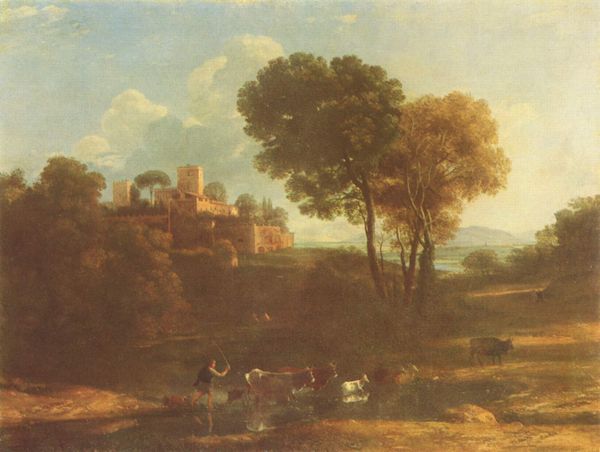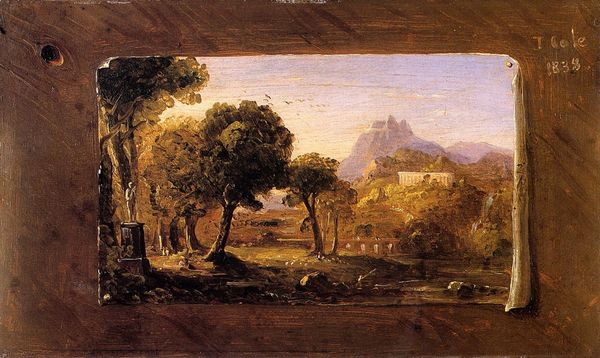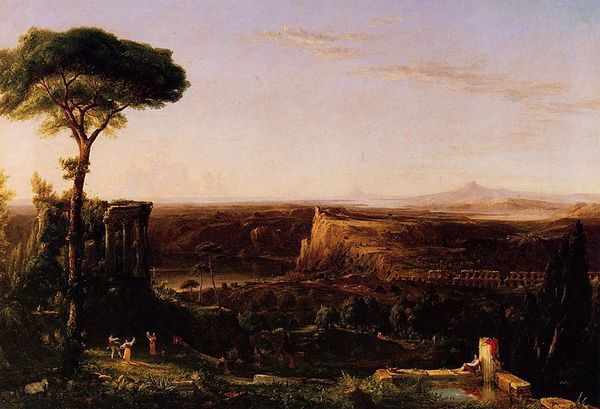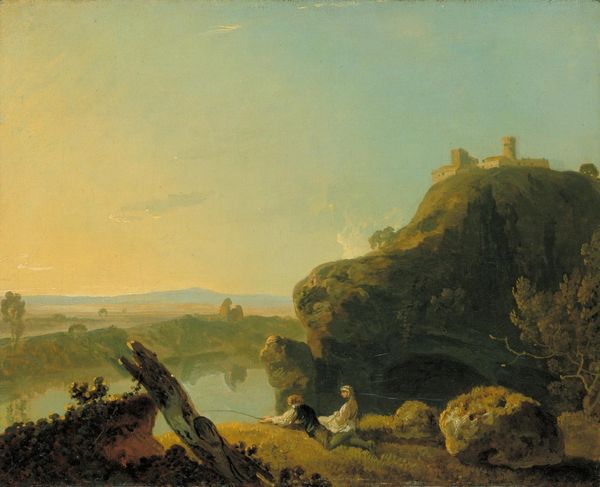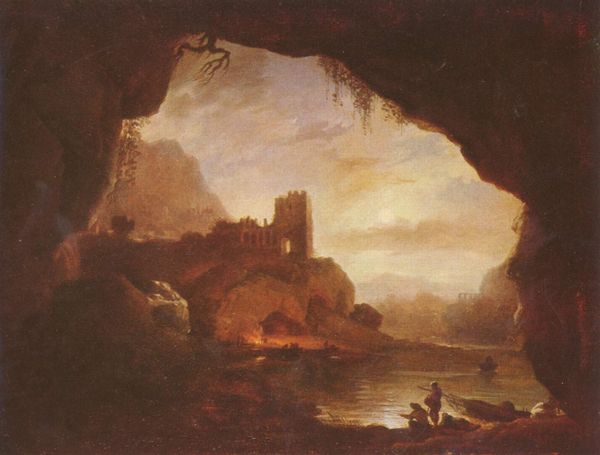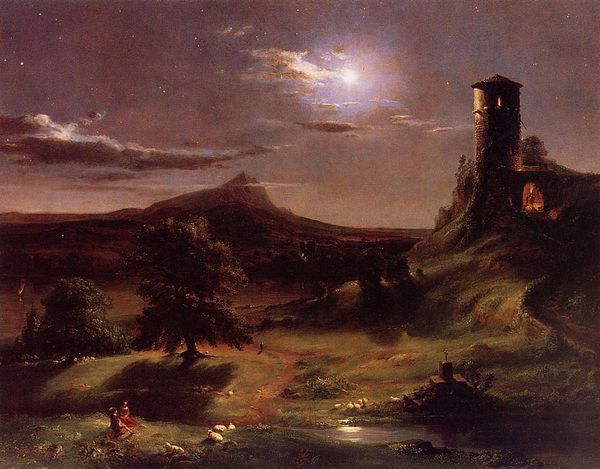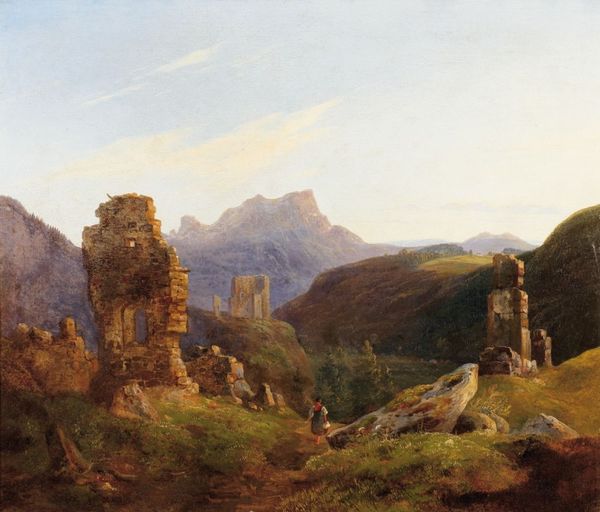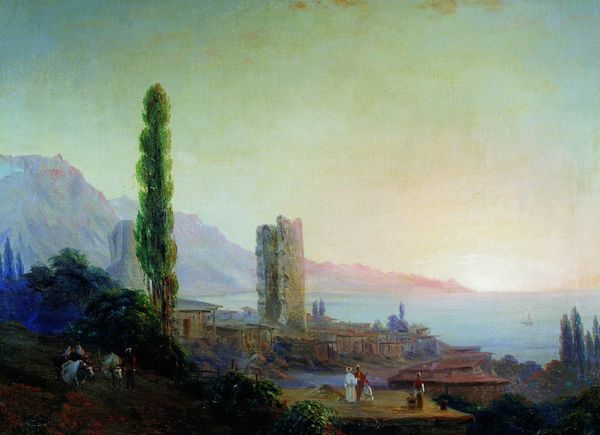
painting, plein-air, oil-paint
#
allegory
#
painting
#
plein-air
#
oil-paint
#
landscape
#
romanticism
#
chiaroscuro
#
cityscape
#
history-painting
#
ruin
Dimensions: 120.65 x 80.01 cm
Copyright: Public domain
Curator: Here we have "An Italian Autumn" by Thomas Cole, an oil-on-canvas work completed in 1844. Note the artist's technique of using plein-air sketches to compose a historical scene. Editor: There's a definite drama in the contrast! The foreground is cloaked in shadow, but look how that golden light blasts through the ruined arches of the central structure. Curator: Precisely. Observe the ruins; Cole employs them to create an allegory of the rise and fall of civilizations. The remnants of classical architecture evoke themes of time, decay, and the transience of earthly power. Editor: So the light, almost blinding, is not just aesthetic. The symbolism behind such bright contrast suggests a type of historical and cultural chiaroscuro at play here. But doesn’t the autumnal setting add a sense of bittersweet nostalgia? Curator: Indeed, you point out a powerful aspect of this piece. Beyond a technical command of pictorial organization, Cole infuses deeper meaning through subtle symbolic language. He paints Italian ruins during America’s Romantic Era to conjure cultural memories and contemplate cycles of civilizations, while simultaneously projecting anxieties and aspirations for America's future. Editor: Note too, the inclusion of small human figures making their way across the foreground—an immediate signal that underscores that nature, not man, is in command of this picture. These humans almost disappear amid the ruins and the scale of nature. The visual cues, therefore, convey the sublime experience and the humbling beauty in ruins and wilderness, an assertion that the American landscape may yet escape the fate of a civilization such as Italy. Curator: I would agree; "An Italian Autumn" exemplifies Cole’s ability to blend aesthetic considerations with philosophical inquiry. His calculated interplay between the warm and cool palettes reinforces these symbolic interpretations on time and memory. Editor: Very well observed. Viewing it now, I am aware of the ways in which art invites speculation that transcends purely visual observation. Curator: Agreed. I can see how close visual analysis helps reveal that the symbolic landscape here is more potent and thought-provoking.
Comments
No comments
Be the first to comment and join the conversation on the ultimate creative platform.
